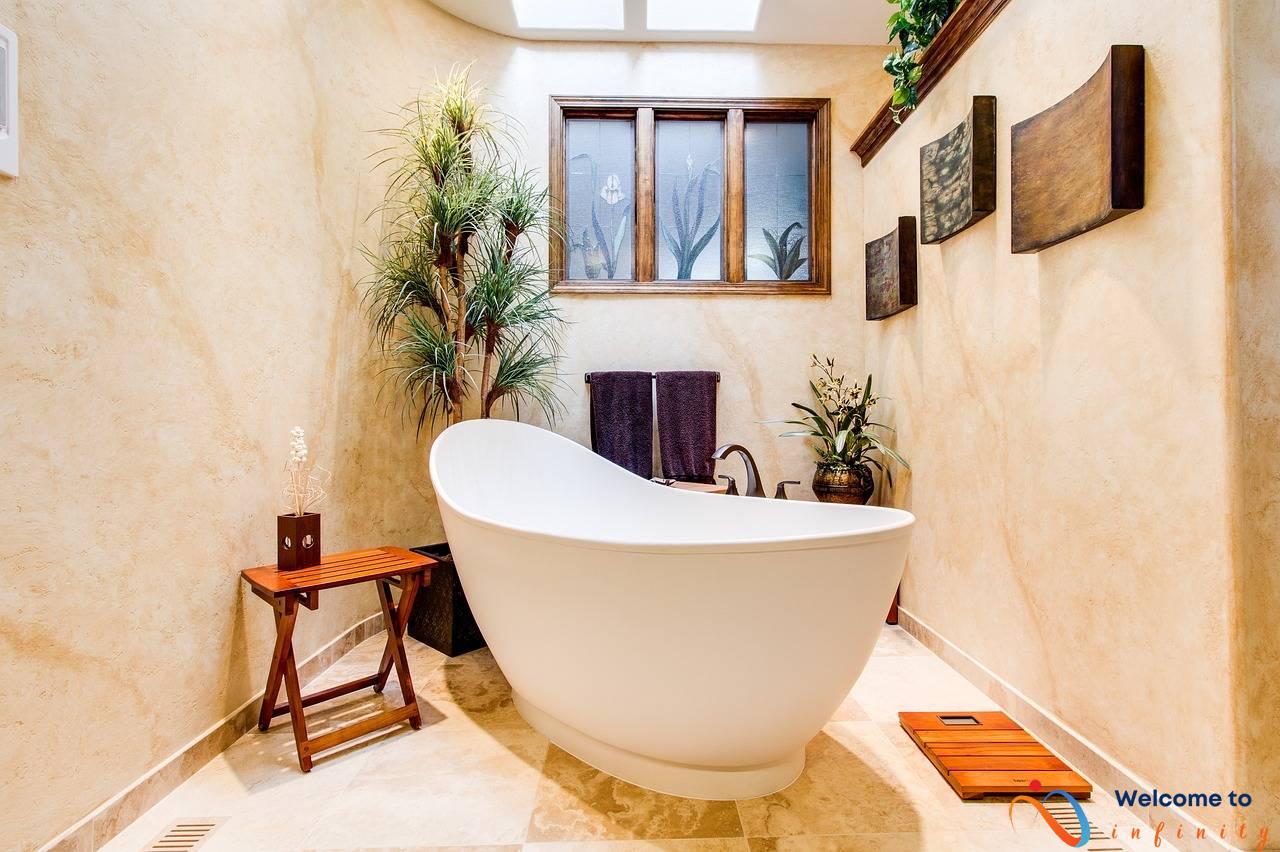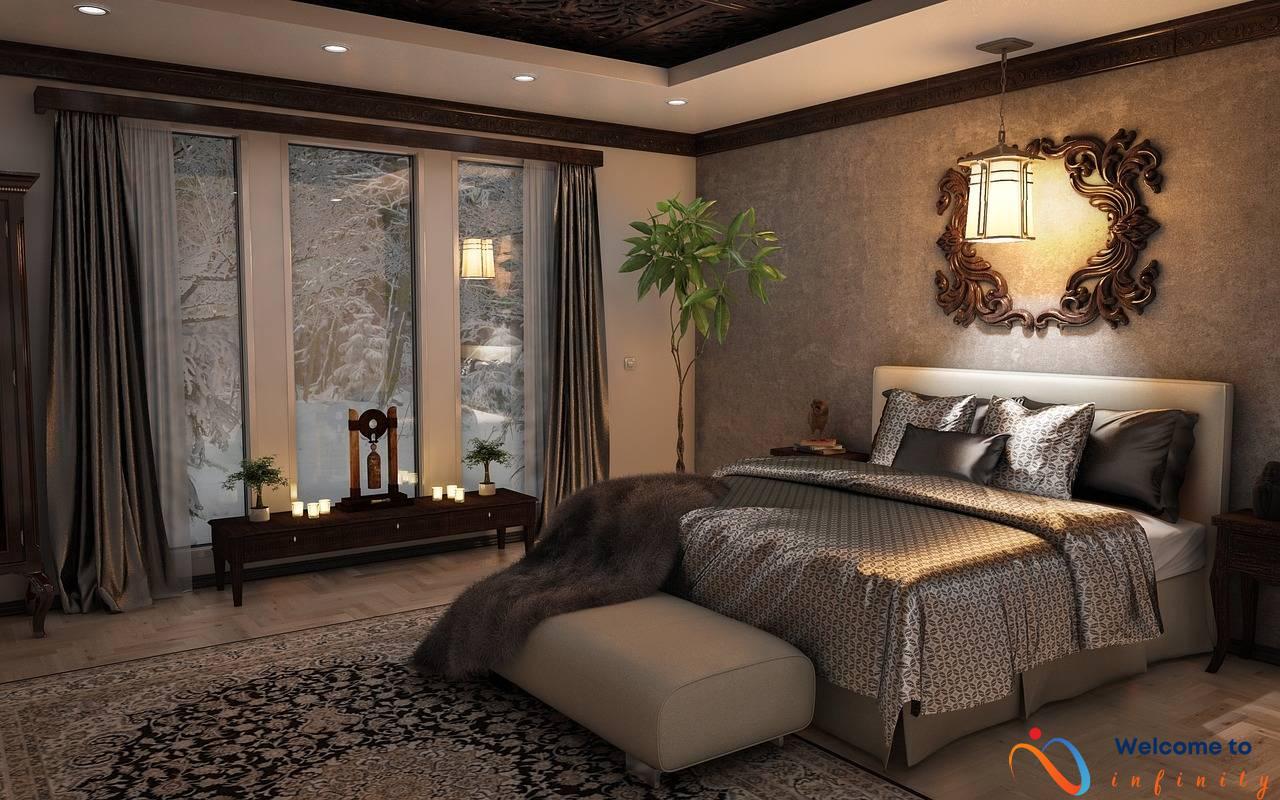Everyone loves coming home to a warm and cozy atmosphere, but achieving this look can be costly and time-consuming. However, with these DIY decoration ideas, you can create a comfortable and welcoming space without breaking the bank.
The best place to start when creating a cozy home is with lighting. Finding the right lighting can instantly transform a space, making it feel warm and inviting. Try swapping out your harsh overhead lights for soft, warm-toned lights or adding some strategically placed lamps. You can even experiment with string lights or candles for an extra cozy touch.
Next, consider incorporating DIY cozy textiles into your decor. Blankets and pillows add warmth and texture to any room, making it feel more inviting. You can make your own cozy blankets, which are perfect for cuddling up under on chilly nights, or sew your own pillow covers using simple materials and techniques. Not only are these projects affordable, but they also add a personal touch to your home decor.
Upcycling vintage finds is another cost-efficient way to add character and charm to your home. You can repurpose old sweaters into cozy pillows, and old tools into rustic wall hangings. These unique decorations add a touch of history and personality, and they're also eco-friendly.
Finally, decorating with plants is an excellent way to add some life and color to your home, while also purifying the air and boosting your mood. Try making your own DIY terrarium or macrame plant hanger for a trendy and boho touch.
With these DIY decoration ideas, you can create a space that feels warm, inviting, and uniquely you without spending a fortune. Start with these ideas, and feel free to mix and match to create your perfect cozy home.
1. Add Warm Lighting
If you're looking to create a cozy atmosphere in your home, adding warm lighting is a great place to start. Warm lighting helps create an inviting and comfortable environment, perfect for curling up with a good book or enjoying a glass of wine with friends.
One of the easiest ways to add warm lighting is by swapping out your light bulbs for ones with lower color temperatures. Look for bulbs that are labeled warm white or soft white, which will emit a yellowish glow rather than a bright white one. You can also add dimmer switches to your existing lighting fixtures to create a more intimate ambiance.
Another option is to decorate with table and floor lamps. These lamps provide a softer and more indirect light source, making them perfect for creating a cozy atmosphere in your home. Look for lamps with fabric or silk shades, which will help to diffuse the light and create a warm and inviting glow.
Finally, consider adding candles to your decor. Candles not only provide warm and flickering light but also add a cozy and romantic touch to your home. Choose unscented candles in neutral colors for a classic and timeless look, or opt for scented candles in warm and cozy scents like cinnamon or vanilla for an extra dose of coziness.
2. DIY Cozy Textiles
When it comes to creating a cozy home, textiles are crucial. Luckily, making your own cozy textiles is easier than you might think. With some simple materials and a few DIY projects, you can add a personal touch to any space. From blankets to pillows, these DIY cozy textile ideas will add warmth and comfort to your home.
One easy and affordable DIY project is knitting a cozy blanket. Not only is this project beginner-friendly, but it also allows you to personalize your home decor with your favorite colors and textures. You can follow an online tutorial or video for step-by-step instructions and inspiration.
If you're looking to add cozy textures to your home quickly, try sewing your own pillow covers. You can use fabrics of your choice to fit your room's color scheme. This project is incredibly satisfying because it can be completed in an afternoon, and you might be able to finish it even faster if you're experienced in sewing.
To make your own cozy blanket, you will need some grounding materials. You will require some chunky yarn and knitting needles. Pick out the yarn in the colors or textures that fit the mood of your space. Cast on your stitches and start knitting for a simple and relaxing activity. You can either follow a pattern or do some improvising to make it completely your own. When you reach the desired length, bind off, and snuggle up with your new cozy blanket.
To make cozy pillow covers, first, choose your fabric and measure it according to your pillow size. Cut two pieces of fabric to the exact size of your pillow. Then, fold the edges of the fabric over twice for a neat finish. Then, sew around the edges of the pillow cover. When you reach the last corner, create a fold and tuck the raw edge inside the fold to complete the pillow cover. You'll have a new and comfortable pillow ready in no time.
2.1 Knit a Cozy Blanket
If you're looking for an easy and affordable way to add some coziness to your home, why not try knitting your own blanket? Not only is it a great way to personalize your decor, but it's also a fun and rewarding DIY project that anyone can try.
To get started, you'll need some knitting needles, yarn, and a basic understanding of knitting techniques. You can find plenty of beginner-friendly patterns online or at your local craft store. Once you have your materials, follow these step-by-step instructions:
- Cast on a certain number of stitches, depending on the size of your desired blanket.
- Knit every row until you reach your desired length.
- Bind off your stitches to finish your blanket.
With just a few hours of time and a little bit of effort, you can create a cozy and stylish blanket that will perfectly complement your home decor. So why not pick up some yarn and give it a try?
2.2 Sew Cozy Pillow Covers
If you want to add a personal touch to your pillows, try sewing your own cozy pillow covers with simple materials and techniques. It's a great way to add a pop of color and style to your living space without spending much. Plus, it's also eco-friendly as you can repurpose old fabrics and turn them into beautiful covers.
The first step is to choose the fabric that you want to use for your pillow cover. You can choose from a variety of fabrics such as cotton, linen, or even velvet, depending on your preference. Once you have your fabric, measure it according to the size of your pillow, leaving some extra inches for seams.
Next, cut the fabric and fold it in half with the right sides facing each other. Then, sew the edges, leaving one end open for stuffing your pillow. Turn the cover right side out, and you'll have a basic pillow cover.
To add a cozy touch, you can also add some embellishments like buttons, tassels, or embroidery. These small details will make your pillow covers more unique and stylish. You can also experiment with different colors and patterns to match your existing décor.
If you're feeling more adventurous, you can also try making patchwork pillow covers by sewing together different fabric scraps. It's a fun and creative way to upcycle old fabrics and give them a new life as a cozy pillow cover.
Overall, sewing your own pillow covers is an easy and affordable way to add warmth and color to your home décor. With some simple materials and techniques, you can create beautiful and unique covers that reflect your personal style and taste.
3. Upcycle Vintage finds
Are you looking to add unique character and charm to your home? Upcycling vintage finds is a great way to do just that. By repurposing old items, you can create new and functional pieces of decor that are sure to impress.
One idea is to turn an old sweater into a cozy pillow. This project is easy and budget-friendly. Simply cut the sleeves off of the sweater, sew the ends closed, and stuff with filling. You can even use the remaining fabric to create a matching throw pillow for a cohesive look.
If you're looking for a more rustic touch, consider creating a wall hanging using vintage tools. Old saws, hammers, and other tools can be repurposed to create unique and eye-catching art. Simply attach the tools to a piece of wood or metal and hang on your wall.
Another idea is to repurpose old windows or doors into unique picture frames. Clean and paint the frame, add some twine or wire to hold pictures, and voila! You have a charming and functional piece of decor that is sure to be a conversation starter.
Finally, consider turning old crates or pallets into functional pieces of furniture. A wooden pallet can be easily turned into a coffee table or bookshelf with a little sanding and paint. Old crates can be stacked and nailed together to create a rustic shelving unit.
By upcycling vintage finds, you can add character and charm to any room in your home. These DIY decoration ideas are not only budget-friendly but also environmentally friendly. Give them a try and see how creative you can get!
3.1 Turn an Old Sweater into a Cozy Pillow
If you have an old sweater that you can't bear to throw away, turn it into a cozy pillow with this simple DIY tutorial. Not only is it a budget-friendly and eco-friendly project, but it also adds a personal touch to your home decor.
Here's what you will need to get started:
- Old sweater
- Pillow stuffing
- Needle and thread or a sewing machine
- Scissors
First, cut the sleeves off of the sweater and turn them inside out. Sew the openings closed to create two small pillowcases. Next, cut the body of the sweater into a square or rectangle shape, depending on the size of your pillow. Be sure to leave enough fabric to fold over and sew closed.
Take one of the sleeve pillowcases and stuff it with the pillow stuffing, making sure to fluff it up evenly. Then, insert the stuffed sleeve pillowcase into the sweater body fabric. Fold the excess sweater fabric over the top of the stuffed pillowcase and sew the opening closed.
Repeat this process for the second sleeve pillowcase and insert it into the opening on the other side of the sweater body. Once both pillowcases are inside, fold the remaining sweater fabric over the top and sew it closed.
And there you have it – a cozy and unique pillow made from an old sweater! You can create multiple pillows using different sweaters to add variety to your decor. This upcycling project not only saves money but also reduces waste and adds a personal touch to your home.
3.2 Create a Rustic Wall Hanging with Vintage Tools
If you're someone who loves vintage and rustic decor, then you'll love this idea to create a unique wall hanging using vintage tools and materials. This project will not only add a touch of history and personality to your home, but it's also budget-friendly and environmentally conscious.
To create your rustic wall hanging, you'll need a few tools such as hammers, pliers, and wire cutters, as well as some old materials such as wood, metal, and fabric. Look for vintage items at thrift stores, garage sales, or in your own storage.
Start by deciding on the size and shape of your wall hanging. Then, use a saw to cut your piece of wood to the desired size. Next, arrange and attach your vintage tools and materials to the wood using nails or wire. You can also add old photographs, postcards, or other memorabilia to your wall hanging for a personalized touch.
If you want to make your wall hanging even more unique, consider painting or distressing the wood or using different colors of wire to attach your items. Finally, once your wall hanging is complete, hammer a picture hanger onto the back so that you can easily hang it on your wall.
Creating a rustic wall hanging with vintage tools and materials is not only a fun DIY project but also a great way to showcase your unique personal style. You can use this decoration idea to add a rustic touch to any room in your home.
4. Decorate with Plants
If you're looking to bring more nature into your home, decorating with plants is a great place to start. Not only do plants add a cozy and inviting feel to any space, but they also have numerous health benefits. Plants can purify the air and boost your mood, making them the perfect decoration for a relaxing and rejuvenating home.
There are countless ways to incorporate plants into your home decor. You can start by adding a few potted plants to your living room or bedroom. Choose plants that thrive indoors and require low maintenance, such as succulents, spider plants, or peace lilies. You can also create a vertical garden by hanging plants from the ceiling or mounting them on a wall. This is a great option if you have limited space or want to add a unique touch to your home.
If you want to get more creative, try making your own DIY planters. You can use anything from mason jars to teacups to create unique and personalized planters. You can even upcycle old containers by painting them or adding patterns to match your home decor. You can also create a terrarium, which is a miniature garden in a glass container. terrariums are easy to make and can be a beautiful centerpiece for any room.
If you're feeling more adventurous, try incorporating plants into your furniture. You can create a living wall by growing plants on a vertical structure like a bookshelf or room divider. You can also create a plant table by placing a glass top over a planter filled with soil and plants. This is a unique way to bring nature into your home and create a conversation piece that is both beautiful and functional.
Incorporating plants into your home decor is a great way to create a cozy and inviting atmosphere while also improving your health. Whether you choose to add a few potted plants or create a vertical garden, these plant decoration ideas are sure to add a natural and beautiful touch to your home.
4.1 Make a DIY Terrarium
Looking for a fun and unique way to add some greenery to your home? Why not create your own DIY terrarium! A terrarium is a miniature garden enclosed in a glass container, perfect for adding a touch of nature to even the smallest of spaces. Follow these step-by-step instructions to create your own:
1. Choose your container: The first step in creating a terrarium is to choose your container. Look for a glass container with a lid, such as a mason jar or a fishbowl.
2. Choose your plants: Next, choose the plants you'd like to use in your terrarium. Select plants that are small, low-maintenance, and thrive in humid environments. Some great options include succulents, air plants, and ferns.
3. Layer the bottom: Starting with a layer of rocks or pebbles, add a layer of activated charcoal, followed by a layer of soil. This will create a drainage layer and prevent your plants from getting waterlogged.
4. Plant your plants: Now it's time to plant your chosen plants in the soil. Be sure to leave enough space between each plant to allow them to grow and thrive.
5. Add decorative elements: To add some extra flair to your terrarium, consider adding decorative elements such as moss, seashells, or decorative rocks.
6. Water your terrarium: Once your terrarium is fully assembled, it's time to water it. Use a spray bottle to mist your plants with water, being careful not to overwater.
7. Care for your terrarium: To keep your terrarium looking its best, be sure to place it in a spot with sufficient sunlight and humidity. Mist the plants with water as needed and trim any dead or wilted leaves.
By following these simple steps, you can create a beautiful and unique DIY terrarium that will add a touch of nature to your home. So gather your supplies and get started today!
4.2 DIY Macrame Plant Hanger
Are you looking for a fun and creative way to add some greenery and boho vibes to your home? A DIY macrame plant hanger is exactly what you need! Macrame is a popular art of knotting and weaving cords to create beautiful and functional pieces, and a plant hanger is one of the easiest and most satisfying macrame projects you can do.
All you need to get started is some cord, a plant pot, and a few basic knots. You can choose any cord you like, such as cotton, jute or rope, and then pick a pot and plant that fits your style and space. This project only takes a few hours to complete, making it an ideal weekend craft.
To create a macrame plant hanger, you will need to learn a few basic knots such as the square knot and the spiral knot. There are plenty of online tutorials and videos that will guide you through the process step by step, and you'll be able to create a beautiful and unique hanger in no time.
Once you've mastered the basic knots, you can experiment with different designs and patterns to make your plant hanger even more special. You can add beads, feathers, or tassels to bring an extra touch of boho style. Your completed macrame plant hanger will not only look great but also help purify the air and boost your mood.
Whether you're a seasoned macrame artist or a beginner, a DIY macrame plant hanger is a relaxing and fulfilling project that adds a touch of nature and charm to your home. It's also a thoughtful handmade gift for your loved ones who appreciate plants and crafts.












